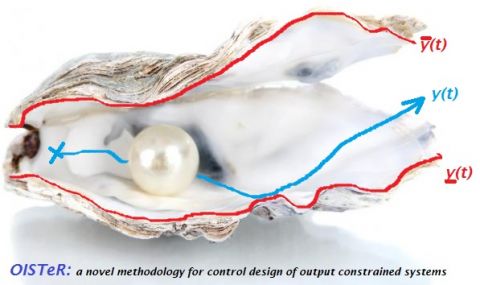Please report any problems to Laurent Burlion (lburlion (at) onera.fr)
Principles and terminology
The acronym OIST denotes an Output to Input Saturation Transformation which was introduced in [1] for nonlinear systems. The main idea is to enforce a time-domain constraint on a given output by saturating the control input.
The acronym OISTeR refers to the recent OIST extensions for Robustness [2]: in other words, the OIST approach can now be applied on uncertain output-feedback linear systems.
The OISTeR Library
Some preliminary functions are under construction
References
| [1] | L. Burlion, "A new Saturation function to convert an output constraint into an input constraint", in the 20th Mediterranean Conference on Control Automation, Med 2012, pp. 1217-1222, 2012. |
| [2] | L. Burlion and H. de Plinval, "Keeping a Ground Point in the Camera Field of View of a Landing UAV", proc of the IEEE International Conference on Robotics and Automation, ICRA 2013, pp. 5763-5768, 2013. |
| [3] | E. Chambon, L. Burlion and P. Apkarian, "Robust output interval constraint using O/I saturation transformation with application to uncertain linear launch vehicle", in Proc of the European Control Conference, ECC 2015, pp. 1802-1807, 2015. |
| [4] | E. Chambon, L. Burlion and P. Apkarian, "Output to Input Saturation Transformation: Demonstration and Application to Disturbed Linear Systems", proc of the IEEE Conference on Decision and Control, CDC 2015, pp. 7566-7571, 2015 |
| [5] | C. Chauffaut, F. Defay, L. Burlion and H. de Plinval, "UAV obstacle avoidance scheme using an Output to Input Saturation Transformation technique", proc of the International Conference on Unmanned Aircraft Systems, ICUAS 2016, pp. 227-234, 2016 |
| [6] | E. Chambon, L. Burlion and P. Apkarian, "Time-response shaping using Output to Input Saturation Transformation", to appear in International Journal of Control, 2017 |

